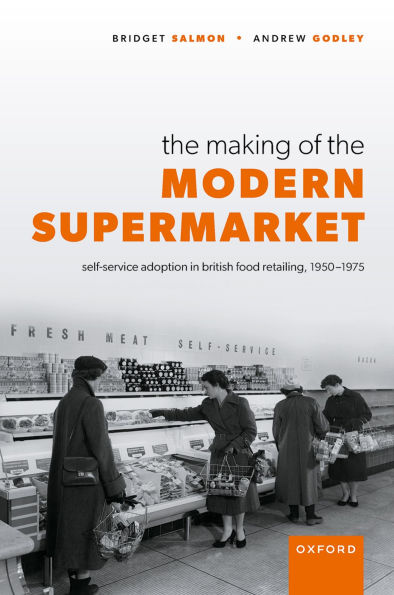The Making of the Modern Supermarket describes the emergence and growth of the modern supermarket format in Britain, showing how the original American innovation of self-service was adapted to the different postwar British context in a number of ways. During the early 1960s various retailers began to experiment with larger formats, which became known as supermarkets. Sainsbury's was a late mover into self-service, but began to develop a different supermarket model, emphasising fresh foods and perishable goods. This led it to pursue a more expensive path of development as it invested in self-service, creating its novel supermarket format by the end of the 1960s. The book explores in detail how this Sainsbury's format evolved. It was driven by the company's historic commitment to selling fresh meat and other perishable goods, which demanded a much greater commitment to refrigeration in Sainsbury's self-service format than was the case for its peers. Because most consumers were suspicious of buying fresh meat and perishables through self-service outlets in the early 1960s, Sainsbury's also had to retain high levels of staffing to support their self-service offering. During the 1960s as they extended their product range, they facilitated the development of one-stop shopping in the UK, where customers were able to buy all their food requirements in one shop, rather than shopping around. This became the most popular version of the supermarket format, and it was the template that others copied as they tried to follow Sainsbury's example.
1147084296
The Making of the Modern Supermarket: Self-service adoption in British food retailing, 1950-1975
The Making of the Modern Supermarket describes the emergence and growth of the modern supermarket format in Britain, showing how the original American innovation of self-service was adapted to the different postwar British context in a number of ways. During the early 1960s various retailers began to experiment with larger formats, which became known as supermarkets. Sainsbury's was a late mover into self-service, but began to develop a different supermarket model, emphasising fresh foods and perishable goods. This led it to pursue a more expensive path of development as it invested in self-service, creating its novel supermarket format by the end of the 1960s. The book explores in detail how this Sainsbury's format evolved. It was driven by the company's historic commitment to selling fresh meat and other perishable goods, which demanded a much greater commitment to refrigeration in Sainsbury's self-service format than was the case for its peers. Because most consumers were suspicious of buying fresh meat and perishables through self-service outlets in the early 1960s, Sainsbury's also had to retain high levels of staffing to support their self-service offering. During the 1960s as they extended their product range, they facilitated the development of one-stop shopping in the UK, where customers were able to buy all their food requirements in one shop, rather than shopping around. This became the most popular version of the supermarket format, and it was the template that others copied as they tried to follow Sainsbury's example.
129.99
In Stock
5
1

The Making of the Modern Supermarket: Self-service adoption in British food retailing, 1950-1975
304
The Making of the Modern Supermarket: Self-service adoption in British food retailing, 1950-1975
304Related collections and offers
129.99
In Stock

Product Details
| ISBN-13: | 9780198956228 |
|---|---|
| Publisher: | OUP Oxford |
| Publication date: | 06/04/2025 |
| Sold by: | Barnes & Noble |
| Format: | eBook |
| Pages: | 304 |
| File size: | 6 MB |
About the Author
From the B&N Reads Blog
